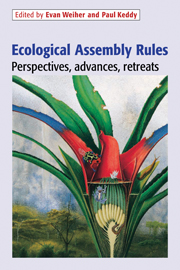Returns
5.31.2006, 730-830 am
Strath Haven -> Crum Meadow
Just a quick jaunt to see what's happenin'. Birdwise, Eastern Wood-Pewees have certainly arrived, as there were 3 singing along the creek behind Strath, so that was an easy checkmark on the Crum birdlist. Also rewarding was my first Common Yellowthroat of the woods, fulfilling yesterday's prophecy. At one point, the bird climbed up a bare vine, and then flew into a dead tree, you simply couldn't ask for a better look. Later, two goldfinches flew into the same tree, right next to the yellowthroat, I'm sure Ezra Pound would've been all over that junk.
Perhaps even more noticable than the birds was the ridiculous amount of plant growth that's happened since I left. The stands of Japanese Knotweed, which were formerly about waist-high, have now grown up to over 10 ft, which sadly is far taller than I am, completely obstructing my views of the creek in some places. Many of the grasses and other ground cover flora have burst up as well, and the result was that Strath was almost completely choked off from the Crum proper by tall grass and Japanese Knotweed. I'm not sure if I'll be making that trek again, not just because of the impassability, but it seems like a ripe location for ticks as well.
On the bright side, Crum Meadow has finally become an actual meadow rather than just a lawn, something that I've hoped to see ever since I got here. I really do hope they keep the meadow like this, as the potential for wildlife is immense. There were some grasses with small purple flowers than the goldfinches seemed to flock towards, as I saw up to ten perched together in a single cluster of the plants. It's a little late in the breeding season now, but it seems like the kind of habitat that birds like Blue Grosbeaks or Yellow-breasted Chats could find attractive, which would be amazing.
Surprisingly, I found no orioles behind Strath; before I left I'd found three singing males in the sycamores near the bridge. Perhaps they're simply not singing, as I didn't hear the Rose Tree Park bird singing either. In addition, the Yellowthroat was the only warbler I encountered, so no Parulas, Black-throated Blues or Greens, or any of the other warblers. I completely missed the wave of Redstarts, Blackpolls, and other late migrants then, which is disappointing. But I'm content to settle in and get comfortable with these summer residents now.
- 1 Common Yellowthroat - male, wetland in the Skunk-Cabbage Hollow
- 4 Eastern Wood-Pewee - three behind Strath, one in the Wister garden
- 2 House Wren - Crum ledge, Holly collection
- 1 Veery - Skunk-Cabbage Hollow, not singing unfortunately
- 2 Acadian Flycatcher - Skunk-Cabbage Hellow, Crum thickets
Labels: birds
 Common Yellowthroat, male. I'll have to look out for this in the Crum, Skunk-Cabbage Hollow seems the most likely location, as they were very common in several locations at Ridley Creek.
Common Yellowthroat, male. I'll have to look out for this in the Crum, Skunk-Cabbage Hollow seems the most likely location, as they were very common in several locations at Ridley Creek. Magnolia Warbler, male. A life bird for me, seen just by the train station of all places. Photo by
Magnolia Warbler, male. A life bird for me, seen just by the train station of all places. Photo by  Scarlet Tanager, male. Recently voted as the most beautiful North American bird, it's a species that is quite uncommon in NC, replaced by the related Summer Tanager, while the opposite is true here in the North, as I've never seen a Summer Tanager around these parts. No photograph or words can do this bird any justice. Photo by
Scarlet Tanager, male. Recently voted as the most beautiful North American bird, it's a species that is quite uncommon in NC, replaced by the related Summer Tanager, while the opposite is true here in the North, as I've never seen a Summer Tanager around these parts. No photograph or words can do this bird any justice. Photo by  Rose-breasted Grosbeak, male. There were 6 of these in one tree in my backyard a few years ago, and I'd never seen them since, until today.
Rose-breasted Grosbeak, male. There were 6 of these in one tree in my backyard a few years ago, and I'd never seen them since, until today.



